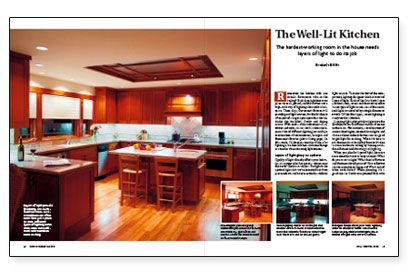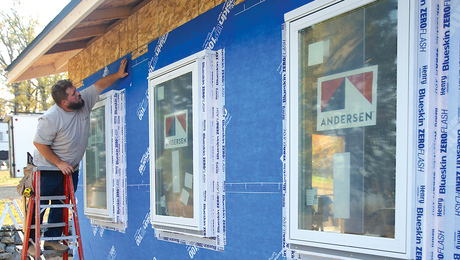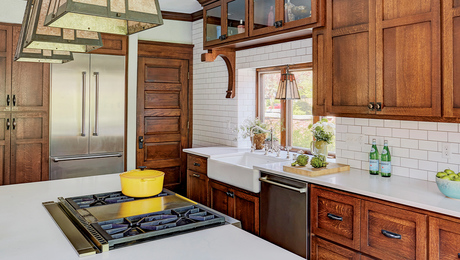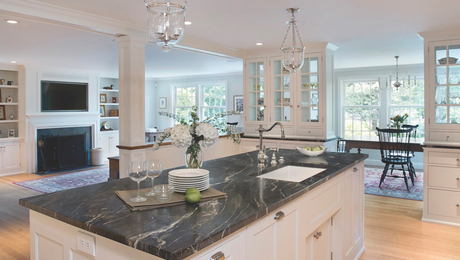The Well-Lit Kitchen
The hardest-working room in the house needs layers of light to do its job right.

Synopsis: A lighting designer’s techniques for blending general, task, and decorative lighting using various types of incandescent, halogen, and fluorescent fixtures to illuminate kitchens. The article includes an overview of lamp types and tips for choosing switches, dimmers, and other controls.
Remember the kitchen with one circular fluorescent tube in the ceiling? Back then, kitchens were places to cook, period, and that fixture was a high-tech way of lighting the cook’s workspace. These days, fluorescent fixtures still provide good light sources, but the kitchen is often part of a larger open space that also includes the breakfast, family and dining rooms. With such a wide assortment of activities and tasks, an area such as this one requires lots of different lighting created by a combination of incandescent, halogen and fluorescent fixtures. In this article, I’ll discuss a number of ideas for lighting a modern kitchen and some things to consider when choosing light sources.
Layers of light give you options
Quality of light directly affects your behavior, as anyone who has spent a winter near the Arctic Circle can tell you. Sunlight is the optimal light, but we’ve extended our lives past sundown and have to settle for artificial light sources. To make the best of the compromise, lighting designers think in terms of layers of light. Each of the four basic layers (ambient, task, accent and decorative) refers to one type of light in one area of the room; each light is controlled by a single dimmer or switch. Of the four types, accent lighting is rarely used in a kitchen.
Layering light gives you the flexibility to create different moods or scenes in the room. For instance, a combination of undercabinet lights, recessed downlights and above-cabinet indirect fixtures creates good bright light for cooking. When it’s time to eat, the mood can be shifted from utilitarian to a more intimate setting by turning on indirect fixtures and dimming task lighting.
When you plan for layered light, there are some considerations to keep in mind: What do you want to light? What kind of fixtures and dimmers should you use? How reflective are the materials in the space? What sort of trims work better? When planning, it’s a good idea to familiarize yourself first with the types of lamps and the quality of their light.
Ambient light can make the room feel bigger
The first job is to provide good general, or ambient, lighting. If you have a limited budget, you can still create good light by installing a 16-in. by 48-in. fluorescent fixture in the center of the ceiling that has color-corrected (80 on the color-rendering index, 3000°K) lamps and a 16-in. by 24-in. fluorescent directly above the sink. You’ll get lots of evenly distributed, natural-looking light.
On a larger budget, I like to use downlights recessed into the ceiling. Arranged around the perimeter of the room, downlights can illuminate the fronts of the upper cabinets, a trick that makes the room seem bigger. The light that grazes the cabinet doors highlights the molding profiles and illuminates the inside of the cabinet when you open the door. I start the layout by centering fixtures on the cabinet door or on pairs of doors, about 6 in.to 8 in. from the face frame.
For more photos and details, click the View PDF button below:


























